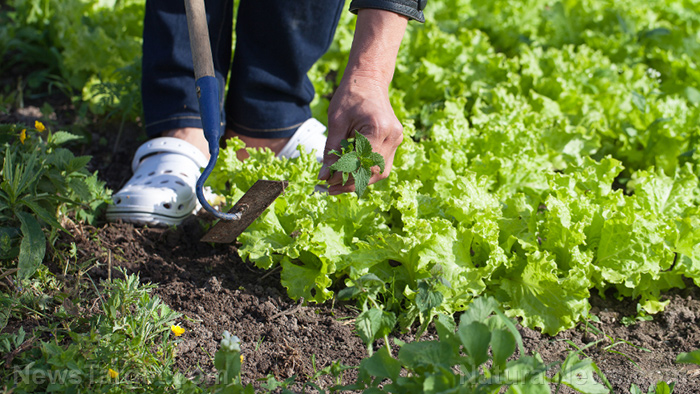Is techno-farming going to replace chemical farming? Some farmers are switching from herbicides to robots for their weed problems
01/15/2018 / By Jhoanna Robinson

Robotic weeders are growing in popularity, an expert said, to support the growth and proliferation of specialty crops, or crops that are not mass-produced, and which include vegetables like broccoli, onions, lettuce, and tomatoes.
The necessity for the utilization of robotic weeders comes from two issues: one, a lack of herbicides that can be used for specialty crops; two, the fact that hand-weeding has become so expensive ($150 to $300 per acre). With the absence of pesticides, growers have had to employ the services of other people to hand-weed vast fields. (Related: Robots to take over jobs in human service industry, increasing the percentage of unemployed Americans.)
“I’ve been working with robotic weeders for about 10 years now, and the technology is really just starting to come into commercial use. It’s really an economic incentive to consider them,” said Steven Fennimore, an extension specialist under the Department of Vegetable Crops and Weed Science at the University of California, Davis.
The robotic weeders are calibrated in such a way that they are able to recognize a pattern and have the ability to tell the difference between a plant and the soil. Also, these robotic weeders are currently being trained to distinguish a lettuce plant from a weed.
“The problem with the machines right now is that they are version 1.0, and there’s tremendous room for improvement. The inability to be able to tell the difference between a weed and a crop requires the grower to be very exact when using them.
“The rows have to be a little straighter, cleaner, and more consistent because the machines aren’t that sophisticated yet. The robots don’t like surprises,” Fennimore said.

The robotic weeders that are sold on the market are priced between $120,000 and $175,000. For some California growers, the new technology is too expensively priced, and have indicated that they will wait until costs have gone down. Other growers however, are willing to invest in a better long-term tool than expensive hand-weeding.
Fennimore is focusing his work on the physical control of weeds. He has also progressed from conducting work on lettuce to applying the technology on other crops such as onions and tomatoes. He said that each crop will require a different robotic weeder system.
“I believe what makes the robotic weeders better than herbicide is that this electronic-based technology is very flexible and can be updated easily. We all update our phones and computers constantly, which is a sign of a robust and flexible technology,” Fennimore said.
Other machines that are arising as robotic weeders
The rise of robotic weeders as an agricultural tool is being seen today as something that would revolutionize agriculture and farming as a whole. Robotic weeders have been so in demand lately that a lot of entrepreneurs and budding start-up aficionados are looking at manufacturing, marketing, and selling their own robotic weeder machines.
One of them is Benoit Carré, developer of Anatis autonomous weeder, who offers his own outlook of weed control for modern agriculture. “Robots are creating a lot of excitement, but we did not set out to build a robot. Instead, we set out to produce a weeder that was automated.
“We have been manufacturing inter-row weeders since 1975 and the next step was a camera-mounted, tractor-guided system, which we developed 15 years ago. These guided weeders will typically work at eight to 10 kilometers per hour. However, farmers don’t want to spend hours on a weeder, as it is a boring job and they are under pressure to reduce costs,” Carré said.
For more stories regarding artificial intelligence, automation, and the way robots are making our lives more convenient, visit Robotics.news.
Sources include:
Submit a correction >>
Tagged Under:
This article may contain statements that reflect the opinion of the author





















